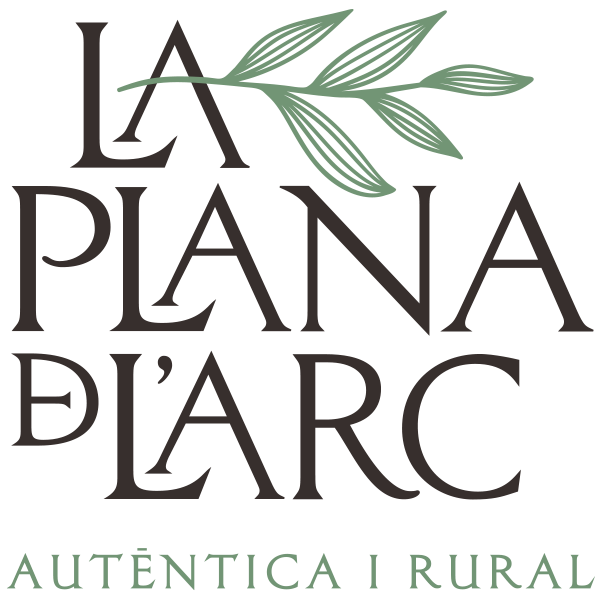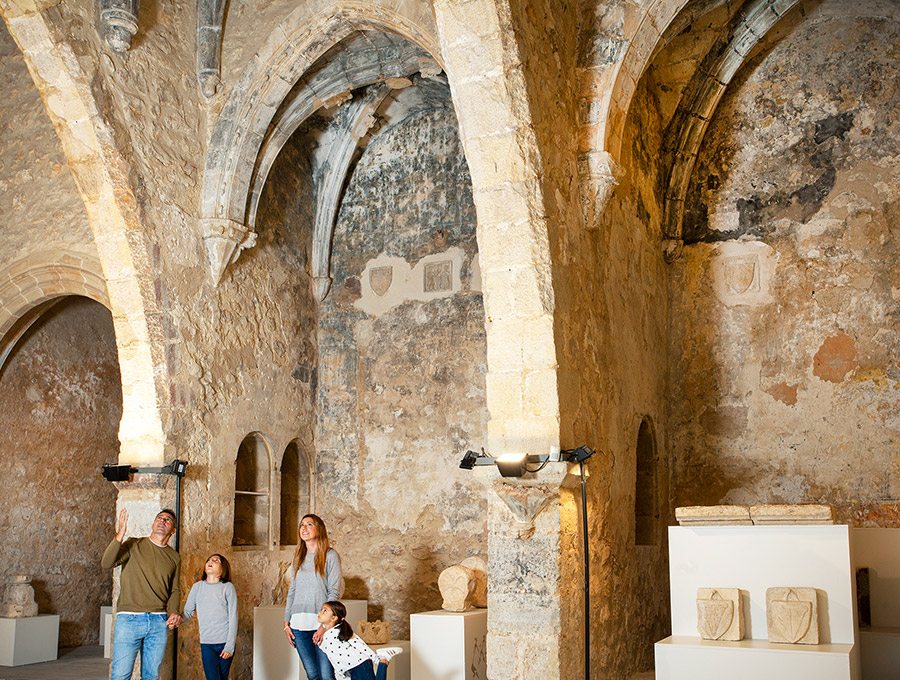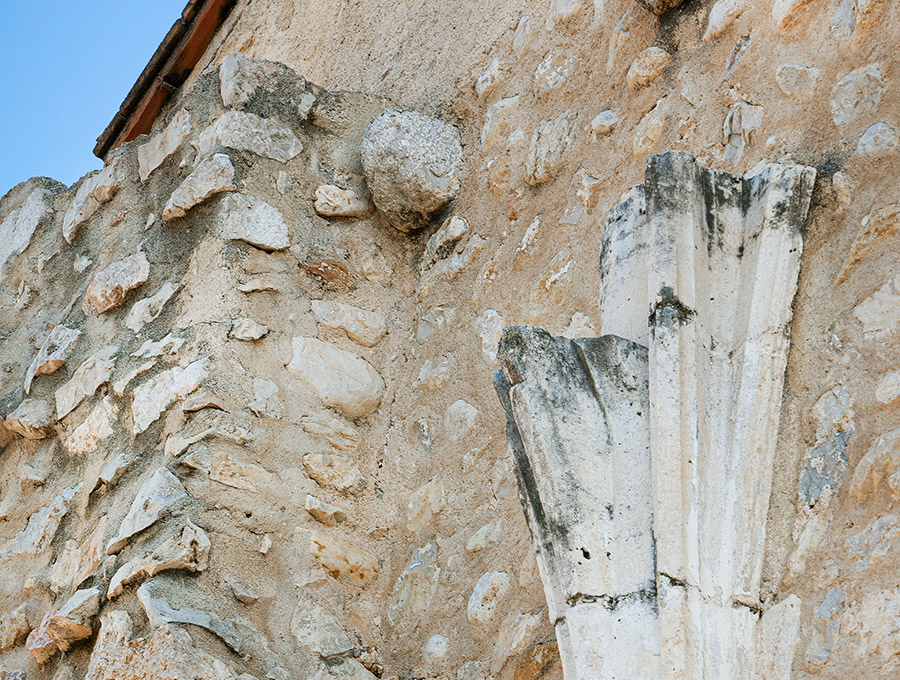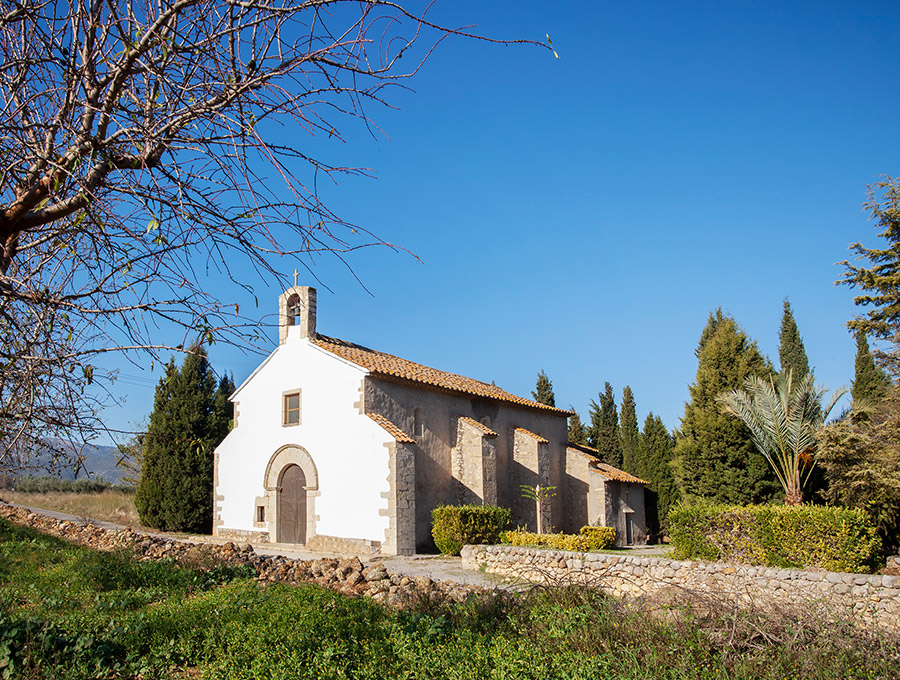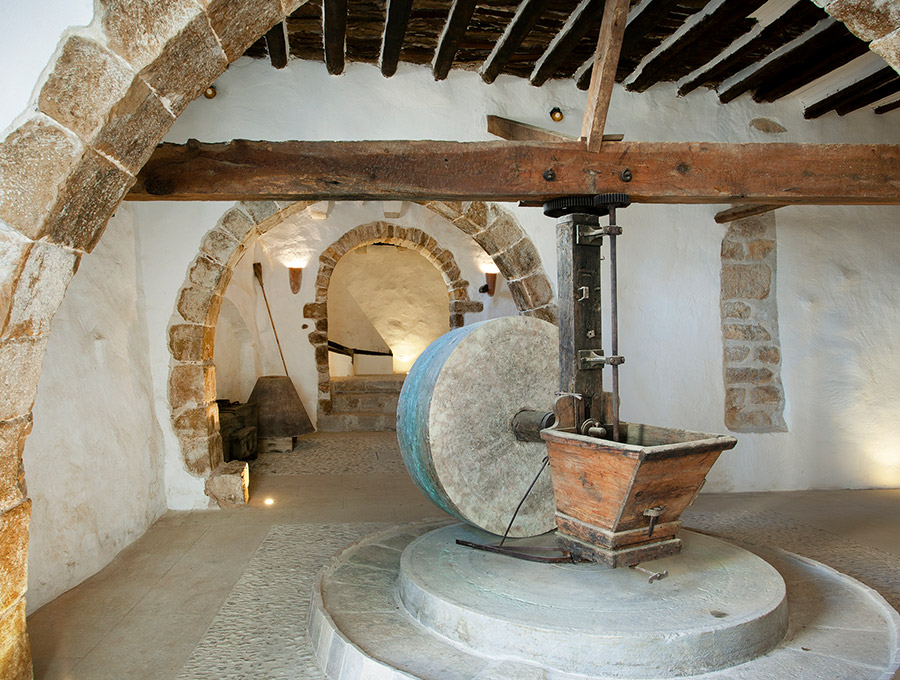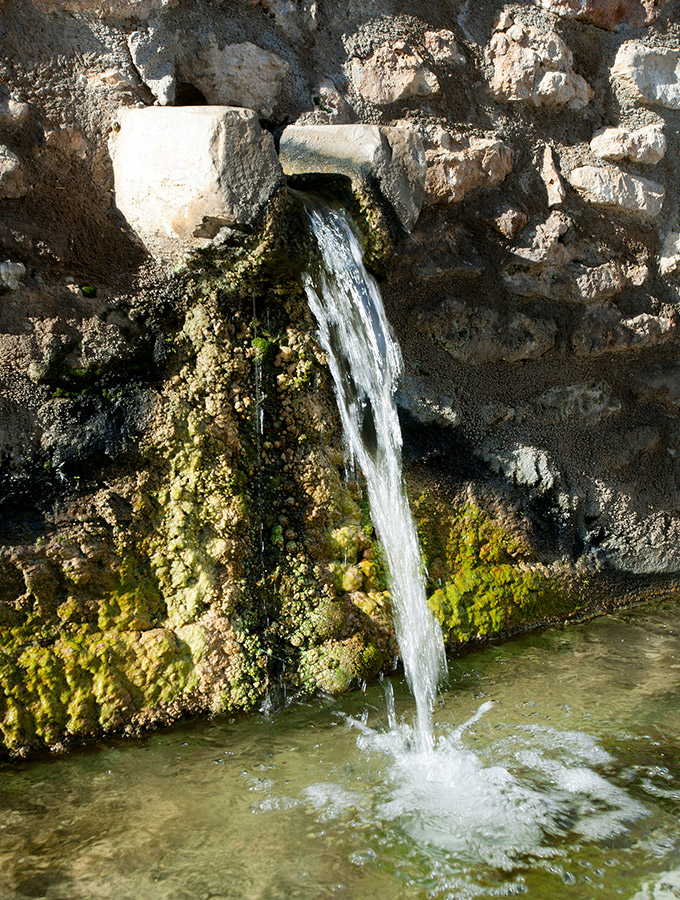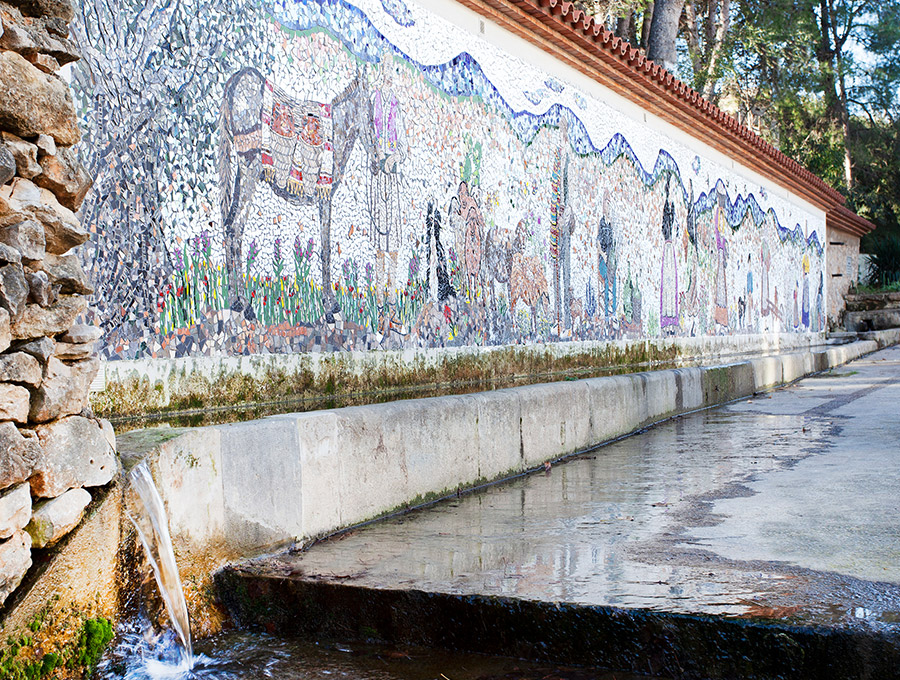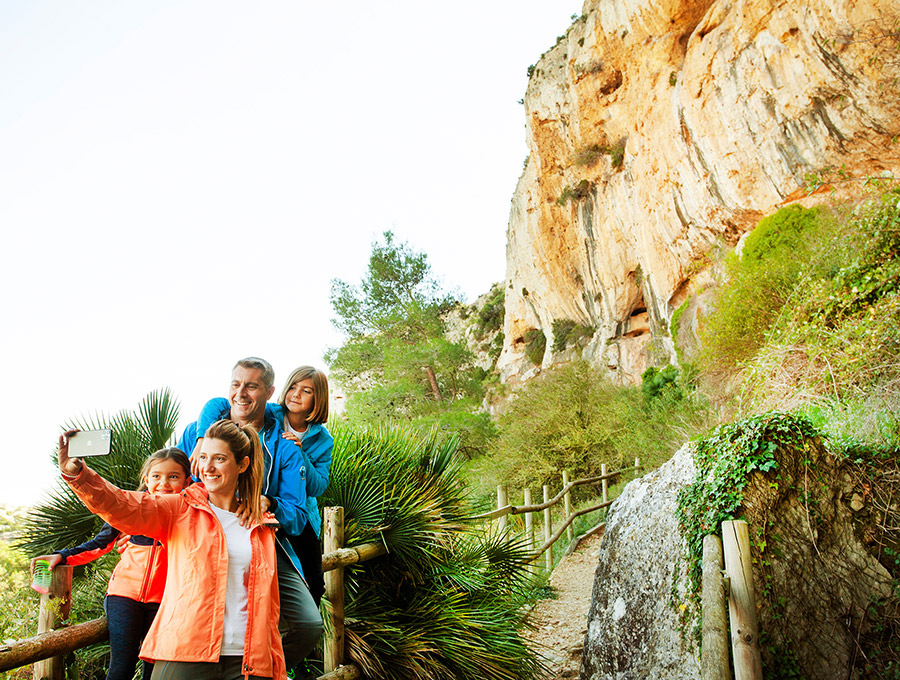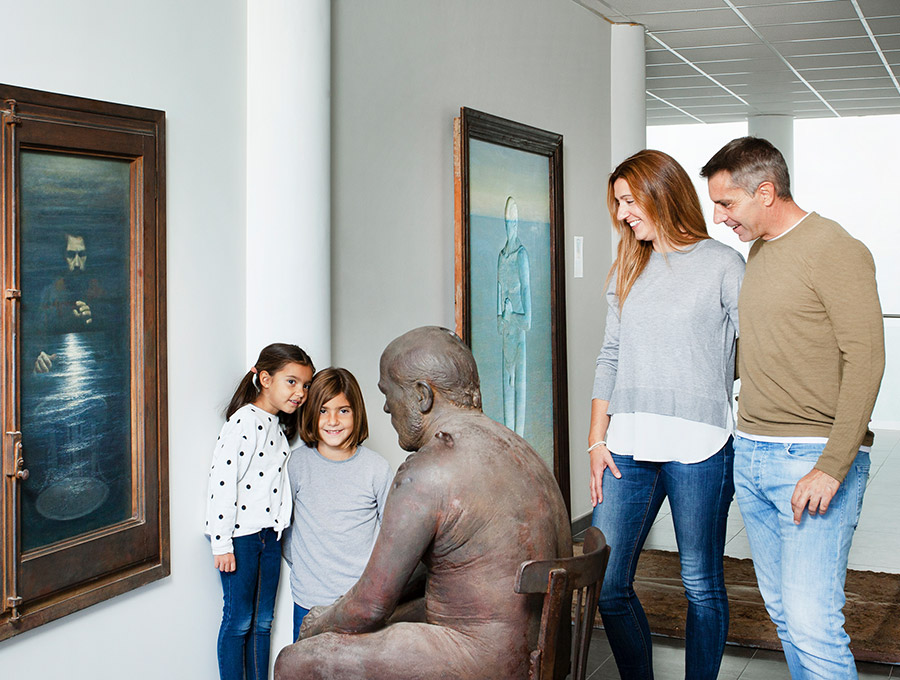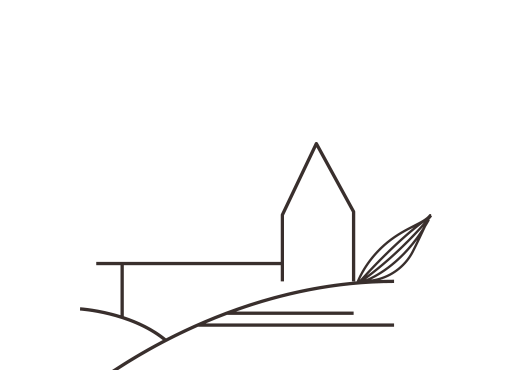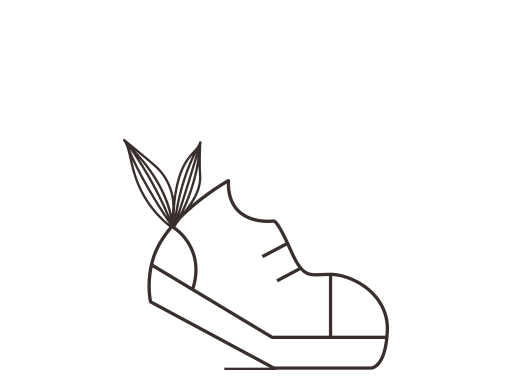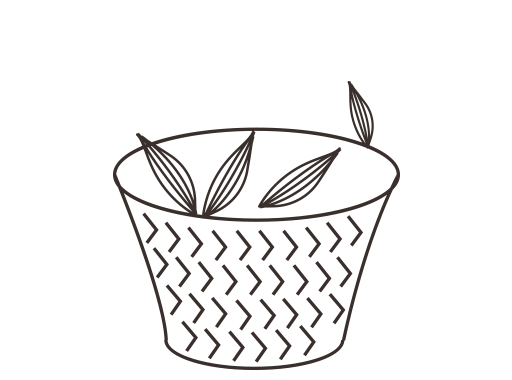What to see in
Les Coves de Vinromà
Paintings in history
If today we talk about paintings in cities as urban art with the ability to connect people, imagine what it feels like to sense the first emotions of human beings captured in the cave art in Les Coves de Vinromà in the province of Castelló. The municipality of Les Coves de Vinromà is a wide valley framed by several mountainous formations parallel to the coast with modest altitudes. Its economy is a combination of almond, carob and olive trees, livestock farming with more than 150 poultry and pig farms, and industrial technology. In Les Coves de Vinromà you can feel the heartbeat of art throughout the centuries.
Cultural heritage
RELIGIOUS BUILDINGS
The old church or the Church of La Verge dels Desemparats
At the top of the rocky hill on which the old town of Les Coves stands, with its back to the river, is the old church or the Church of La Verge Maria dels Desemparats, the town’s old parish church. Gothic with renaissance traces, the church was first a mosque, laid out east to west, as the Muslim religion prescribes in the Summa, and of course pointing towards Mecca. When used for Catholic worship, the church had a rectangular floor plan, side arches and a wooden gable roof. The building was progressively extended in three construction periods from the 13th to the 17th century. Much of the church was destroyed during the Civil War. The courageous town of Les Coves reconstructed the building, which was finally restored in 1988. Nowadays, it hosts cultural events and is home to the Town Information Centre, where you can learn about its history through the museum collection.
Verge de l’Assumpció Church
What happens when a town outgrows a church? You build another one. And that was the beginning of the history of this place of worship, which is more centrally located and larger than the Verge dels Desemparats Church. In 1744, the local architect Jaume Bort i Milià drew up the first plans. Andrés Moreno designed and carried out the construction work until, in 1786, the authorities appointed Bartomeu Ribelles Dalmau, who drafted a new project to continue with the construction. The conflict between baroque tradition and neoclassical academicism rages within its walls. Work continued until the 19th century, but the neoclassical altars and interior decoration were preserved. There is also an important collection of gold items and liturgical vestments.
Calvari Chapel
Look up and gaze upon this building with a façade made of carved ashlars! The chapel is dedicated to Sant Crist del Calvari and is easily recognised from the immense dome of blue tiles that covers it. This temple is one of the few surviving octagonal temples. Inside, the frescoes of the Passion by the artist Joaquim Oliet stand out. Since it is a chapel dedicated to Calvary, as usual before you arrive you see the Stations of the Cross in which the Passion of Christ is depicted.
Sant Vicent Chapel
It is an obvious fact that signs are part of our everyday lives. We know that this chapel was built at the beginning of the 17th century because an inscription reading 1614 appears above the door. Everything suggests that it was built to commemorate the second centenary of the saint’s passage through these lands. It is a Site of Local Relevance. The church is built of masonry, except for the door arch and the end of the buttresses, which are made of ashlars to improve structural solidity. It has a gable roof.
HISTORIC BUILDINGS
Boix Moliner Manor House
The walls of this stately home could tell a thousand stories thanks to its longevity. To visit it is to look through the peephole of the centuries. Built in the Middle Ages, it has two floors and a basement. The ground floor, which is very decorative and has huge windows to provide natural light, was used by the owners, and consisted of a kitchen, dining room, library and several bedrooms. Upstairs were the bedrooms, a roof terrace, a granary and servants’ quarters. The basement was used to produce wine and oil with a mill and press, as well for storage. The house is connected by a large central staircase – you will never have seen steps like these!
Font de la Vila Fountain
The town’s elders say that when Sant Vicent Ferrer arrived at Les Coves he asked for water and it was from this fountain that the saint was given a drink. This motif, which is passed down from one generation to the next, allows us to date the origin of the water system to the 15th century, although the first documentary evidence dates back to 1744. It is made up of a fountain, a drinking trough and washing places, now restored, located next to the Roman road.
Company Fountain
The magic of water … its power, its strength, can be found in this fountain, which dates from 1885, according to a plan of the oldest part of the municipality. The water hierarchy and connections preserve it from contamination. Firstly, there is a stream for human use, which can be used to fill jugs, bottles or demijohns; then there is a drinking trough, followed by a washing place and finally, the surplus water is supplied to the adjacent vegetable gardens for irrigation. Company Fountain was, in the past, the place where oaths were made and the town’s symbols of power and justice were located.
Portalet
If you stand beneath Portalet, you will probably hear the sounds of one of the old entrances to the town, the only one that remains from the castle. It consists of a double round arch where the entrance gate and 4 arches have a shared support. Under the porch formed of the arches you can see the image of Sant Roc, the town’s patron saint. It was a thoroughfare for people and goods and a prominent place for what we would today call “networking”.
COUNTRYSIDE AND OTHER SIGHTS
Valltorta Ravine
You will fall in love with this natural temple, devoted to the mother rock that protects art. Declared a World Heritage Site in 1998, the ravine runs through the municipalities of Tírig, Albocàsser and Les Coves. Among the various shelters and caves, the most outstanding collection of paintings is in Cova de la Saltadora cave, which is more than 200 m long and contains 150 figures. These cave paintings are unique in both style and subject matter. Hunting scenes, animals, archers and female figures can be seen, reflecting everyday scenes from the life of the people who inhabited the area thousands of years ago.
La Moreria and Riu de Sant Miquel
There are landscapes that are messengers of civilisations, caretakers of nature and ambassadors of time. This site is one of them. Its telluric beauty has dazzled the world for being the cradle of civilisations, for its cave paintings, for the Moorish constructions and for a rich flora of full of contrasts thanks to the river. This was the stage for an event that marked the town’s recent history. A girl named Raquel claimed that the Virgin Mary had appeared to her in Campana de la Morería cave. This news spread quickly along with the young girl’s prediction that on 1 December a great event would take place: at three o’clock in the afternoon, the day would turn to night and miracles would fill the land. Nothing happened on the appointed date … However, who knows what secrets still lie within these rocks?
Sport centre
Les Coves has facilities for a wide variety of sports. These include the cyclocross circuit, the municipal swimming pools with one for children and another for adults, the natural grass football pitch, the pelota court, the basketball area, the football area and the tennis court. In addition, in recent years these facilities have been extended with paddle tennis courts and a skate park, as well as a beach volleyball court.
Museum Collection
Les Coves de Vinromà is one of the municipalities in the Valencian Community that has permanent recognition of its museum collection. This recognition is the result of the registration and cataloguing of the local heritage through an inventory and cataloguing project carried out by experts. This collection is made up of archaeological remains, mainly from the old church of Verge Maria dels Desemparats and the Boix Moliner Manor House.
MUSEUMS
Exhibition Hall
C/ De l’Hospital, 6
T. 964426009
This is a municipal building that houses the permanent and temporary exhibitions of local artists and others of interest, thus providing a new cultural and tourist attraction seeking to promote the area’s talent and offer local citizens and visitors the opportunity to enjoy art in a nearby municipal building. The building has 3 floors, two of which are intended to house the pictorial and sculptural work of Tomàs Roures. You can also enjoy the paintings of the artists Santi Tena and José Sales.
Almirez Museum
C/ Dels Martirs, 5
T. 629843547
This is a collection designed to follow the footsteps of mankind through the use of mortar. It is located in a 3-floor building that displays mortar for industrial, culinary, decorative and other uses.
Valltorta Museum
Pla de l’Om s/n Tirig
T. 964 33 60 10
Open: October to April, Tuesday to Sunday from 10am to 2pm and 4pm to 6pm.
May to September, Tuesday to Sunday from 10am 2pm and 5pm to 8pm.
Valltorta Museum is the only museum of cave art in the Valencian Community. It acts as a welcome centre for visitors, providing them with information about the history and most interesting aspects of the cultural park, as it is the starting point for guided tours of the cave painting sites in the Valltorta-Gasulla Cultural Park. Valltorta Museum carries out research projects on rock art and its creators. For this purpose, it has an archaeology laboratory and storerooms, a library and a graphic archive of rock art in the Mediterranean Arc. Valltorta Museum’s archives constitute the visual, scientific and technological memory of prehistoric rock art in the entire Valencian Community.
